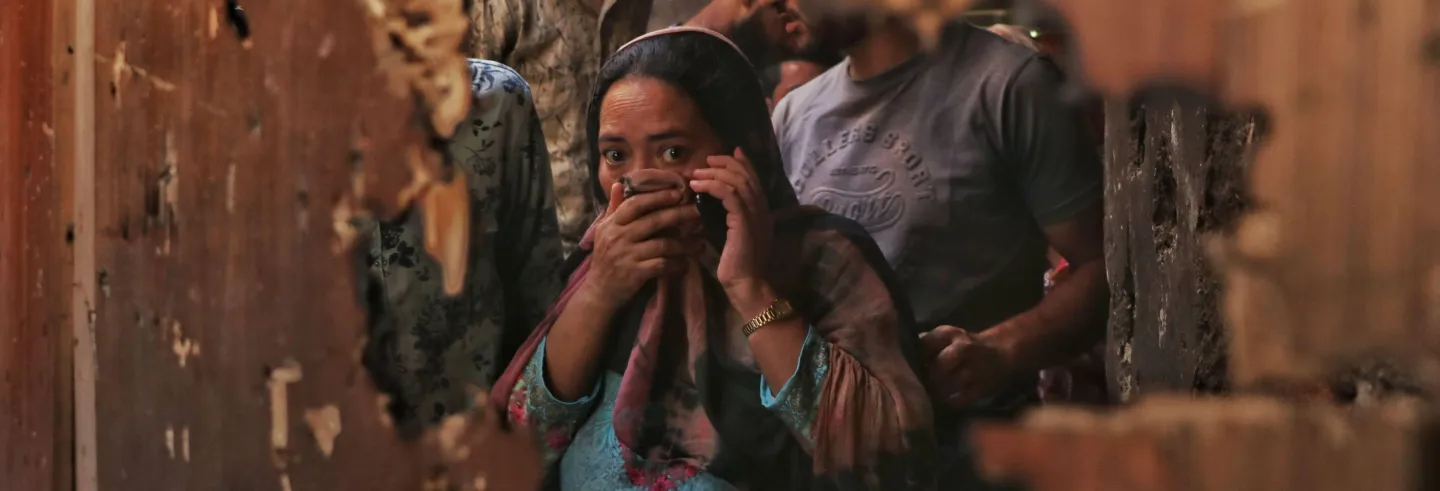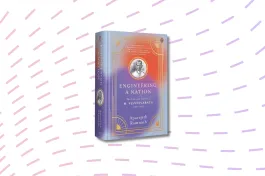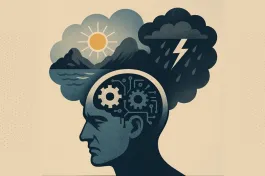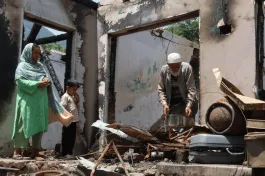In early October, the Rashtriya Swayamsevak Sangh supremo Mohan Bhagwat toured Jammu and Kashmir, his first visit to the newly formed union territory. At a seminar in Jammu, he averred that for the system to change in the region “mentality has to change first”.
Two years since Jammu and Kashmir’s special status was revoked down without consulting the people and the state broken into two union territories, there are signs of a change of heart all around, though perhaps not in the way Bhagwat would have wanted it.
After 5 August 2019, when Articles 370 and 35A were struck down, much of the erstwhile state was steeped in an eerie silence. However, the Buddhist-dominated Leh district of the newly formed union territory of Ladakh broke out into euphoric celebrations. There were also some celebrations in Hindu-majority Jammu.
Today, in Ladakh political leaders say that Kashmiri political domination has been replaced by a much worse bureaucratic domination of the territory’s hill council, leading to resentment and renewed demands for statehood. There is anxiety about losing land and jobs to outsiders and of ecological damage from an influx of people, even as the government remains non-committal on their demand to protect the tribal communities of the region through inclusion in the Constitution’s sixth schedule. Added to this, the Chinese transgressions inside the Line of Control have made the 2.7 lakh people of Ladakh feel extremely vulnerable.
Even in Jammu, disappointment has set in. On 22 September the Jammu Chamber of Commerce & Industry, several traders’ associations, and the Bar Association of Jammu called a strike to oppose what they called the “directionless policies” of the government that were discriminating against the region. This was the first strike in the region since August 2019.
There has been an unusual silence in the Kashmir valley, which has otherwise been the epicentre of political turmoil and conflict.
To be clear, neither Jammu nor Ladakh is seeking the reinstatement of Article 370. In both regions, the rallying point of protesters is the demand for constitutional guarantees to protect the exclusive privileges of residents with respect to land, business and jobs, as in Himachal Pradesh and the Northeastern states. The Buddhist inclination towards BJP in the last three decades was cemented with the acceptance of their demand for Ladakh being made a union territory separate from Jammu and Kashmir; even though the decision widened the gulf between the region’s two districts: Buddhist-dominated Leh and Muslim-dominated Kargil. The newer concerns in Ladakh however have altered the political landscape of divisiveness and the demand for statehood has united political groups across the two districts.
Jammu’s Hindu belt has traditionally been inspired by RSS ideology since pre-partition days. Despite seething discontent over the post-2019 alterations, much of the Hindu right-wing constituency in Jammu ideologically remains intact and wedded to the cause. While there is no reason yet for a change in the political narrative in Jammu, resentment over the economic fallout of 5 August 2019 is finding some voice. The clear consensus in both regions is that they are not happy with the aftermath.
However, there was an unusual silence in the Kashmir valley, which has otherwise been the epicentre of political turmoil and conflict. Barring the occasional murmurs of some political parties against the revocation of Article 370, as encapsulated in the Gupkar Declaration, there were no visible signs of protest: no stone pelting or large assemblies of people to demand anything from the mundane to the political. Newspapers continue to be filled with reportage on statements and achievements of the Jammu and Kashmir administration and with stories of tourists thronging the valley, of air shows and the new film policy.
Is there a change of heart in Kashmir — the kind Bhagwat would dream of?
***
At a recent public event in Srinagar, a section of a prominent road was converted into an art space. Students painted the street surface with images that symbolised the natural beauty of Kashmir. A few days later, pictures floated on the social media showing of street dogs enjoying their siesta sprawled over the paintings, and of dogs pissing in the beautified area.
The government encourages art and artists; but only if artists are willing to restrict themselves to floral motifs, shikaras, or kangris.
The ephemeral beauty of these paintings is a parable. Locals point out the contrasting everyday reality of potholed roads, stinking garbage dumps, damaged streetlights, frequent power outages, poor water supply and ask whether these paintings compensate for the missing essential services needed for a dignified life in any city. The local economy is also sagging, with unemployment at an all-time high of 21.6% (the highest in the country), according to the latest Centre for Monitoring Indian Economy (CMIE) report.
But such questions do not find space in the media. Instead, the event was projected as the highlight of the Smart City Project and a platform for artists. Floral patterns and nature have been inspirations for artists and handicrafts artisans in Kashmir for centuries through their periods of virtual slavery and through the more recent turbulences. Rarely have the famous pashmina shawls or papier-mâché products through these years revealed the gory history of exploitation of artisans or the misery of Kashmir and its volatile politics. The government encourages art and artists; but only if artists are willing to restrict themselves to floral motifs, shikaras, or kangris — which is how Kashmir needs to be seen for the sake of ‘national interest’. Any contrary artistic expression or even a mundane word seen as critical of the Indian state or its favourite foreign allies qualifies for penal action against writers, artists, journalists, and ordinary netizens.
The response comes in the form of criminal charges, arrests, illegal detentions, or verbal summons to police stations for questioning, a process that is intimidating enough to make those targeted disappear from the social media scene. For instance, in May, Mudasir Gul, a Srinagar-based artist, was illegally detained for his graffiti depicting a teary-eyed woman donning a Palestinian flag over her head, with a one-liner ‘We are Palestine’, drawn in response to the Israeli bombing of Gaza and the killing of Palestinian civilians.
***
The vast section of Kashmir’s media fell in line post 5 August. A sophisticated machinery of control in place has enabled a climate of fear in which the majority are expected to comply and shut their mouths or face consequences. Most local newspapers now carry more government advertisements than news content and are filled with the highlights of government achievements, often using government handouts in their unedited form.
A primary objective of the policy is the use of media to project a positive image of the government. Once the media is tamed into becoming a PR agency, everything becomes invisible.
Journalists become prime targets if their critical reportage punctures the positive narrative rolled out by the government. The noose around such reporters is ably being tightened, through a recent spree of police summons, raids on houses of journalists, demands to reveal personal information through mandatory questionnaires, and arrests of some on alleged terror charges; all to create a chilling silence.
These repressive actions, most of which do not come out in the public domain out of sheer fear or sense of embarrassment of targeted individuals, are in line with the potent recipe of censorship that Jammu and Kashmir devised in June 2020 in the form of a Media Policy. A primary objective of the policy is the use of media to project a positive image of the government. Once the media is tamed into becoming a PR agency, everything becomes invisible except for what the government wants to show to the world.
Newspaper editors are unwilling to speak out against the government’s pressure tactics. While some enjoy the monetary benefits of the “carrot (advertisements) and stick (harassment)” policy for journalists, others who take a more cautious line are silenced by phone calls from officials warning them of ‘consequences’. Though none of them is willing to speak out, some share their predicament in private conversations.
***
Once the media is silenced, the entire population loses its voice. This becomes easier when tyranny is increasingly exercised through methods opaque to the world and less through gory human rights abuses like torture, extra-judicial killings, or enforced disappearances. A relationship with a militant or over-ground worker, or one’s smartphone, filled with data and social media posts, seized in random raids, can become evidence of ‘treason’ qualifying for criminal charges like Unlawful Activities Prevention Act (UAPA) or revolving door detentions under Public Safety Act.
Beyond brute military power, a slew of laws and policies introduced by the government post-2019 have enabled the sense of fear to percolate down deeper.
The National Crime Report Bureau report for 2020 shows that Jammu and Kashmir, which has just 1% of the country’s population, accounts for over a third of the total number of UAPA cases filed across the country. While across India, UAPA cases dropped to 796 in 2020 from 1,226 in 2019, Jammu and Kashmir logged an increase to 287 from 255 cases. Lawyers and activists point out that most UAPA cases are not reported in the media. There is even lesser reportage about intimidation and raids. In this all-pervading atmosphere of fear, neither officials nor the targeted people divulge information. So potent is this fear that most people I have regularly been speaking to for feedback from Kashmir either do not respond to my calls or speak requesting anonymity.
Beyond brute military power, a slew of laws and policies introduced by the government post-2019 have enabled the sense of fear to percolate down deeper. Amongst these are new land laws that have displaced hundreds of nomadic communities and dispossessed them of their traditional abodes in the forests and their grazing pastures. Officials can now deny passports to those merely accused of a range of crimes including stone-pelting. Government employees are arbitrarily dismissed for their alleged involvement in ‘actions detrimental to the security of the state’. Even by these new standards, a recent government diktat took things too far. According to this order, employees would be held liable for the actions of family members and close friends. So wide and ambiguous is the scope of the language used in the order that has instilled fear in the minds of many. Friends working in government sector tell me they live in perpetual fear of losing their jobs on one pretext or the other.
These are stories that are rarely reported. The dominant narrative regarding Jammu and Kashmir remains the official narrative of ‘normalcy’, ‘tourism’, ‘achievements’, the ‘benefits of 370 abrogation’, and ‘terrorism’.
***
During the last two years, the government and security agencies have time and again proclaimed victory over militants and chronicled encounters in which militants have been killed. According to official data, by end-July, 90 militants were killed, and fewer people were joining the militancy. “It is a good thing for forces and society,” Vijay Kumar, the inspector general of police, said in July.
This celebratory tone did not consider emerging trends in militancy. In the last several months, militants have struck with impunity inside high-security zones and attacked both unarmed cops and civilians. So far this year, 28 civilians have been killed. In the first week of October, seven civilians were killed, five of whom were members of minority communities. In a valley that is overwhelmingly Muslim dominated, the killings of minorities is a sign of a major calamity that neither Jammu and Kashmir nor the rest of the country can afford.
Kashmir’s situation reveals the tell-tale signs of a region pushed into a vortex of irrecoverable misery and destruction thanks to the monumental official blunders.
The new strategy employed by militants is a serious challenge for the security forces. An acknowledgement of has come only after a recent spate of killings. In separate incidents, suspected terrorists singled out and shot dead two school teachers belonging to Kashmir’s minority communities and killed a leading Kashmiri Pandit pharmacist inside his shop. An unnamed security official was quoted in the Indian Express as attributing the attacks to "part time” militants who are off the radar and are assigned to kill soft targets with pistols.
While abrogating Article 370, the BJP government had assured that “terrorism will end, J&K residents will get equality and development”. In contrast, Kashmir’s situation reveals the tell-tale signs of a region pushed into a vortex of irrecoverable misery and destruction thanks to monumental official blunders. The entire energy and focus of the administrative and security apparatus in the last two years had been on crushing Kashmir’s political, social and economic spaces through military and administrative oppression. While Kashmir has for decades suffered from several phases of excruciating tyranny, in the past New Delhi would punctuate military oppression with breathers. There has been little pragmatic thinking about the possible consequences of incessantly pushing an entire population to the suffocating point, as is being done now.
Kashmiri separatist leaders may today be redundant, but there are no signs of a dead separatist sentiment. The deepening alienation, anger, and despair has only strengthened that sentiment.
About a month ago, a chilling reminder of Kashmir’s continued volatility came when police landed up at the house of Hurriyat leader Syed Ali Shah Geelani within an hour of his death to seize his body. That the body of a nonagenarian leader, who had been inactive and bedridden for over a year, had to be forcibly taken away and buried away in a hush-hush manner before the crack of dawn, says a lot about the claimed ‘improvement’, ‘normalcy’, and ‘withering influence of separatist leaders’. Owing to their multiple flaws as well as repression, Kashmiri separatist leaders may today be redundant, but there are no signs of a dead separatist sentiment. The deepening alienation, anger, and despair has only strengthened that sentiment, even though there is little visible articulation due to the government’s ruthlessly stamping out of political and democratic spaces. What comes out is through the outlet of guns.
Most Indians, including liberals and intellectuals, fall into the trap of the ‘all is well’ optics offered by the government because they cannot hear anything else, even though the intriguing silence of Kashmir itself is evidence against the narrative of ‘acceptance’ and some form of collective satisfaction. It is difficult for mainland Indians to understand the predicament of Kashmiris in their daily lived reality and the cumulative baggage of trauma they have been carrying for years. Kashmiris, living amidst abject fear and dealing with the consistent and incremental erosion of the few rights they had prior to 2019, view the silence of the Indian intellectuals and liberals with disappointment, if not bitterness.
The spate of civilian killings including selective targeting of minorities should serve as an eye-opener. But the early responses of Indian liberals are not very promising. While the killings of Kashmir’s minorities have rightly evoked massive nationwide outrage, the killing of a Gujjar Muslim man by security forces in Anantnag, merely for speeding past a barricade does not even provoke questions of accountability.
There is enough evidence for the state’s responsibility in recklessly pushing Kashmir to this point with its break-neck speed of oppressing of an entire population.
The killings of civilians by the militants or state’s agencies will not just deepen the chaos and despair within Kashmir. It will also have repercussions beyond, particularly when the country’s rulers are obsessed with promoting divisive politics and promoting Hindutva agenda over constitutional democracy. Fragile communal harmony and virulent communal passions are a treasure trove for the BJP which has patented the art of using it to its electoral advantage. This is the reason why many in Kashmir invoke the conspiracy theory of a ‘Deep State’ under the BJP government to explain the recent killings. The possibility cannot be ruled out but there is no evidence yet to strengthen such claims. However, there is enough evidence for the state’s responsibility in recklessly pushing Kashmir to this point with its break-neck speed of oppressing an entire population in the name of fighting terrorism instead of reaching out to the ordinary public and isolating the militants.
The killings, particularly of Pandits and Sikhs, have horrified and shocked everyone. But almost every Kashmiri you speak to would agree that it was not unexpected. It was anticipated that the most likely and early reaction to the tyranny exercised against the Kashmiris would be violent, irrational, and inspired by hate. The BJP government had piled up enough incendiary material to trigger an inferno of unimaginable proportions, a trailer of which was witnessed in the first week of October. Sajad Lone, the president of the Peoples’ Conference, has pointed out that “we are in for some challenging times and I can see a tipping point,” and advised the government to “get off the high horse”.
***
The changing external scenario only adds to the fragility of the erstwhile state of Jammu and Kashmir: Chinese transgressions, the evolving situation in Afghanistan, and Pakistan’s increasing proximity with China. The geopolitical threat to the region, however, is no bigger than the one the Indian state is creating itself with flawed policies of suppressing and disempowering the territory’s 13.6 million citizens. In other words, the emerging strategic concerns in South Asia can become momentous only if the people within the Indian territory are pushed to the brink.
Unfortunately, it is towards that direction that the Indian state’s policies are aimed. The prospects are frightening, not just for Jammu and Kashmir, but for the entire country.










